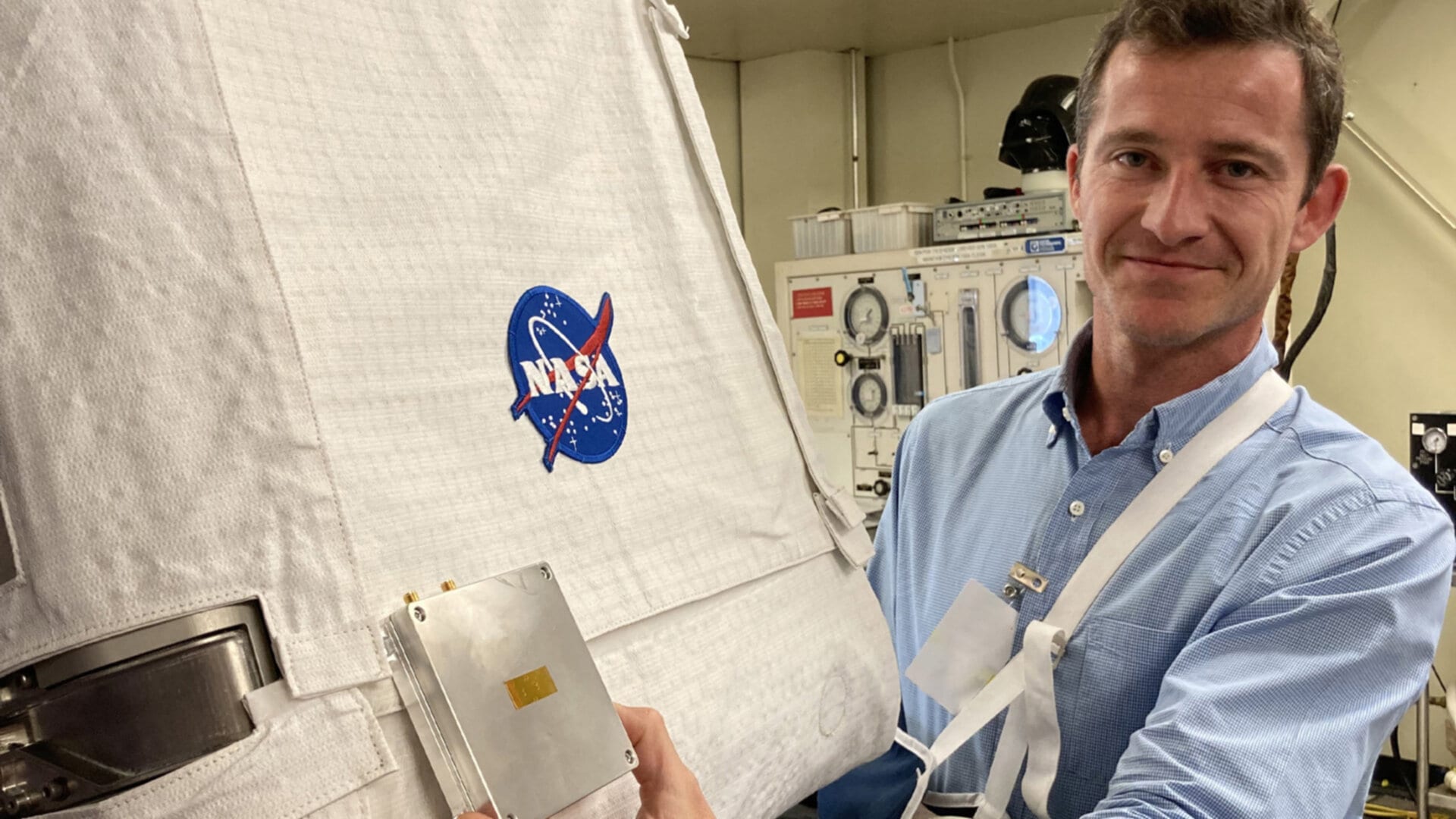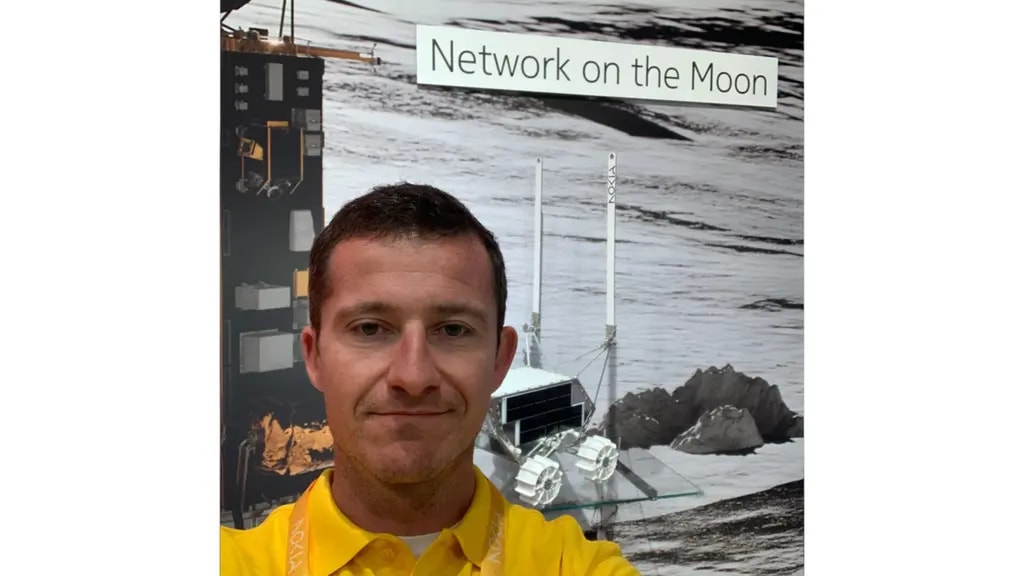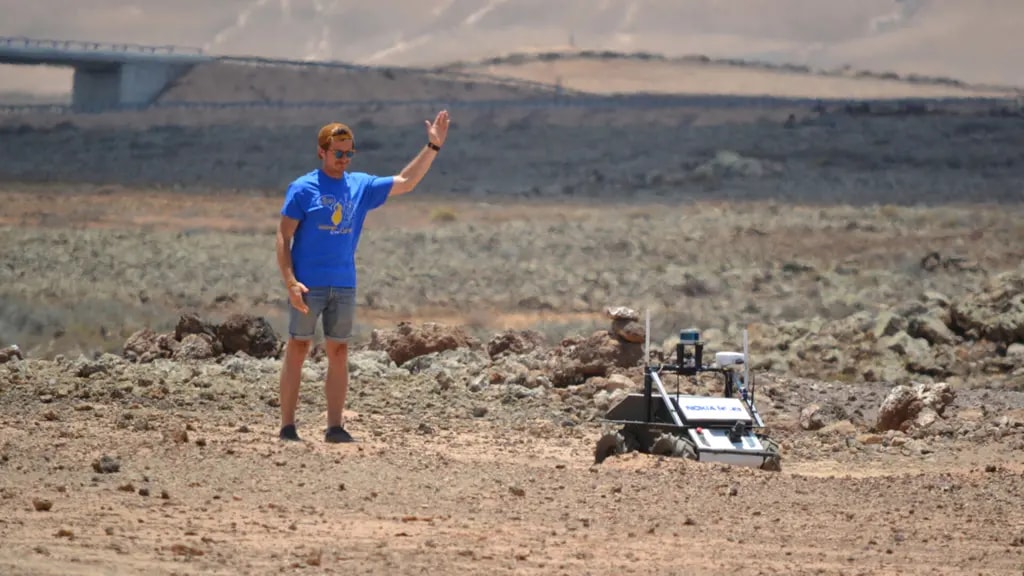The Moon Maestro: Meet the Nokia Bell Labs innovator taking networks out of this world

NASA is returning humans to the Moon for the first time since the Apollo Program wrapped up 50 years ago. This time, though, it will have many more technologies at its disposal, including some developed by Nokia in our mission to boldly take a cellular network where it has never gone before.
As a key partner in NASA’s “Tipping Point” initiative, Nokia - together with our partners Intuitive Machines and Lunar Outpost - will deploy the first-ever LTE/4G network on the Moon next year aboard an uncrewed mission dubbed IM-2. The goal is to demonstrate how cellular technologies can be used and adapted for future space exploration and to pave the path to a potential sustainable human presence on the Moon.
It's an exciting new era in space exploration. For the man tasked with making it a reality for Nokia, the mission marks the culmination of several years of intense work and the fulfillment of a lifelong dream.
“I believe that communications are a critical resource for future space exploration activities, and, in this mission, we’ll be proving the viability of these technologies,” explained Luis Maestro, the project’s principal engineer. “This is definitely the highlight of my career so far.”
From Spain to Denmark, Dallas to Sunnyvale
Maestro was born and raised in the Spanish coastal city of Alicante, where, as a water sports enthusiast, he spent most of his free time at sea, either windsurfing, sailing or diving. But from an early age, he was also drawn to the sciences and, like many kids, harbored dreams of one day becoming an astronaut. It was his graduate degree in Telecom Engineering from Miguel Hernandez University in Spain, however, that set him on his eventual career path.
He worked on his master’s degree in Mobile Communications at Aalborg University in Denmark before becoming a research assistant there and focusing on advanced radio research topics. He later joined Nokia in Madrid and then moved on to Dallas and, finally, Sunnyvale, California. For the past eight years, he has been focused, among other areas, on innovating ultra-compact, rapidly deployable and mission-critical wireless communications solutions for Nokia Bell Labs.
“I’ve been lucky that throughout my career, I’ve always been involved in innovation, exploration and disruptive ideas,” he said.
The Moon mission represents a combination of all three. For it to even be feasible, Maestro and his colleagues have had to figure out original ways of overcoming various obstacles and challenges. For example, some modifications had to be made to the hardware being deployed, and then there was the “small matter” of engineering equipment able to survive the treacherous journey to the Moon itself.

Fly me to the Moon
Once there, Nokia will power up its compact LTE/4G network mounted on Intuitive Machines’ Nova-C lander, enabling wireless communications with Lunar Outpost’s MAPP rover as it traverses the lunar surface.
The LTE/4G network will operate for up to 12 days during lunar daylight and will be used to control the rover from Earth remotely. It will also send back a live video feed, telemetry and network measurements collected across the rover’s multi-kilometer path on the lunar surface. The Nokia Bell Labs team has conducted extensive simulations with its partners using digital terrain maps of the Moon to carefully plan the routes of the rover, to avoid driving into a crater and to minimize the risk of losing connectivity.
“We are building a network for the harshest environment that we know of, and the learnings that we can get from this can be applied to improve products on Earth,” Maestro explained. “You can consider what we are doing an ‘extreme’ private network deployment.”
Such technologies could come in handy on Earth, for example, on an oil rig, in a deep mine operation, in a nuclear power plant or at a remote post in Alaska.
For a viable long-term presence on the Moon, we will need more than just connectivity. Therefore, the IM-2 mission will also include experiments designed to discover other critical resources. NASA, for example, plans to drill on the lunar surface in search of ice that can be converted into breathable oxygen and fuel.

Bell Labs going back to the future
The whole operation represents a triumphant return to space for Bell Labs.
In 1962, we launched Telstar 1, the first communications satellite capable of relaying TV signals between Europe and North America. Two years later, a pair of Bell Labs researchers, Arno Penzias and Robert Wilson, discovered cosmic microwave background radiation, one of the strongest pieces of evidence supporting the “Big Bang” theory of the explosive origin of the universe.
Bell Labs was also responsible for system analysis and evaluation for “Project Mercury,” the first U.S. program to put a man in space. It also offered technical advice to the Gemini and Apollo programs, which eventually landed the first man on the Moon.
Maestro hopes the upcoming mission will help close the “generation gap” in public fascination that has developed over the decades and rekindle a new golden era in space exploration.
“We need to go back and again push the boundaries of what can be possible. There are many good reasons to go back to the Moon and beyond,” he said, ranging from the prospect of discovering rare minerals to having a “backup plan” in case of a planetary catastrophe.
“Humans are explorers by nature,” he continued. “By doing these space exploration activities, we are advancing technologies that eventually will benefit everyone here on Earth.”
Maestro was recently one of the primary presenters of Nokia’s LTE on the Moon demonstration at the 2023 World Mobile Congress in Barcelona, where he found a broad sense of validation from an audience that appreciated what he and his team have been working on for so long.
Now, the wait is on for the launch itself later this year. Maestro admits he feels a mixture of excitement and anxiety.
“We are all looking forward to seeing this happen. We are true believers in the potential of the technology and how it will make space exploration much more efficient,” he said.
Does all the buildup make him secretly want to journey to the Moon himself?
“Keep in mind that this first mission is a one-way ticket,” he joked. “I think I’ll wait until there is a return vehicle.”
